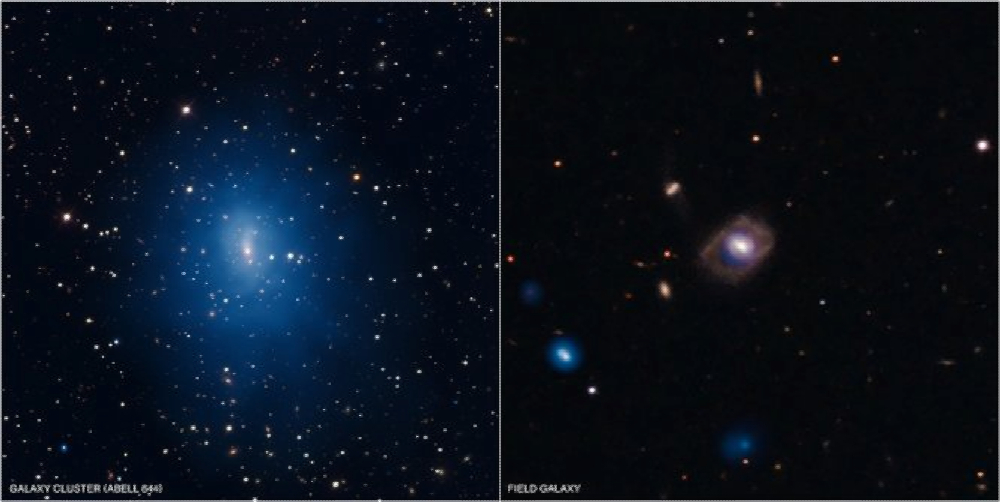
 Credit: X-ray: NASA/CXC/Northwestern Univ/D.Haggard et al. Optical: SDSS
Credit: X-ray: NASA/CXC/Northwestern Univ/D.Haggard et al. Optical: SDSS
Growing Black Holes
Supermassive black holes at the centers of galaxies can be more massive than a billion suns. They get so big by eating smaller things, gas clouds and planets and stars. When they're actively eating they're also actively emitting high energy radiation in the form of X-rays. How often do they feed, and for how long? What influences the food supply? To help answer these questions, scientists have turned to large surveys with X-ray and optical telescopes to distinguish the active population of supermassive black holes from those taking an after-dinner break. The image above shows composite images from a new study using the Chandra X-ray Observatory's Chandra Multiwavelength Project (ChaMP) (shown in blue) and optical data from the Sloan Digital Sky Survey (SDSS). The image on the left shows the cluster of galaxies Abell 644, and on the right the isolated field galaxy SDSS J1021+131. Using data from ChaMP and the SDSS, astronomers have been able to study how frequently supermassive black holes in the nuclei of galaxies are found in their actively feeding state. They've found that only one percent or so of galaxies with masses similar to the Milky Way contain supermassive black holes in their most active phase. This study provides the first direct determination of the fraction of isolated galaxies in the local Universe that contain active supermassive black holes.
Published: January 3, 2011
<
HEA Dictionary ● Archive
● Search HEAPOW
● Other Languages
● HEAPOW on Facebook
● Download all Images
● Education ● HEAD
>

Each week the HEASARC
brings you new, exciting and beautiful images from X-ray and Gamma ray
astronomy. Check back each week and be sure to check out the HEAPOW archive!
Page Author: Dr. Michael F. Corcoran
Last modified Monday, 26-Feb-2024 17:11:26 EST


